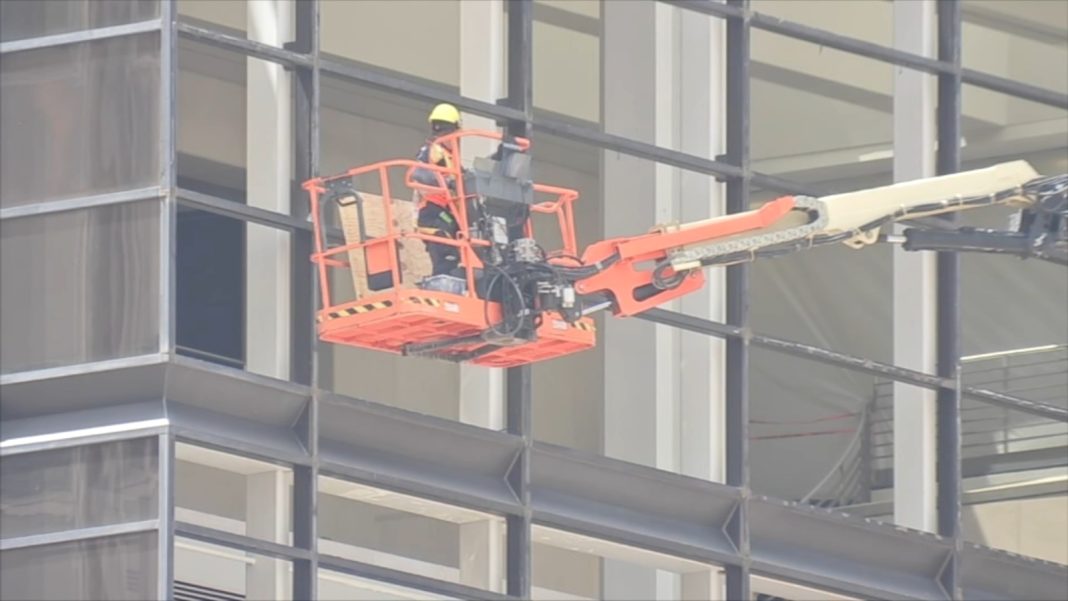Severe storms in Houston have caused significant damage to buildings downtown, with approximately 4,000 windows shattering, according to the Houston Downtown Management District. The affected buildings include well-known landmarks such as the Chevron Building, Penzoil Tower, Bank of America Building, Wells Fargo Plaza, and Hyatt Regency Downtown.
Experts have identified a unique factor contributing to the extent of the damage – the building arrangement in downtown Houston. Raudel Avila, an assistant professor of mechanical engineering at Rice University, explains that the arrangement of the buildings creates tunnels that amplify wind speeds. This increased wind speed leads to higher pressure on the windows, which can ultimately cause them to shatter.
The shattered windows are primarily concentrated on the east and west sides of the buildings. In some cases, windows on the upper levels of the Penzoil Tower have been blown out and even angled upward. Avila highlights the significance of different variables, such as window orientation and wind direction, in determining how the materials deform under pressure.
Brittle glass, flying debris, and high wind pressure are all factors that may have contributed to the windows blowing out. Avila emphasizes that glass windows require very minimal deformation before they shatter when subjected to pressure. This vulnerability explains why even slight pressure can cause windows to completely break.
In response to the damage, several streets around the affected buildings have been closed for safety reasons. This precautionary measure aims to prevent any potential accidents or injuries caused by falling glass or debris. The streets affected by closures include Smith from Clay to Pease, Andrews from Smith to Shaw, Shaw to Ruthven Bell from Milam to Smith, Louisiana from Pease to Clay and from Polk to McKinney, Dallas from Smith to Milam, Lamar from Milam to Smith, McKinney from Smith to Milam, Milam from Capitol to Rusk, and Travis from Lamar to McKinney (partially closed) and from Franklin to Commerce.
The extent of the damage caused by these storms highlights the importance of considering weather conditions and building design in areas prone to severe weather events. Architects and engineers must carefully assess factors such as wind patterns, building orientation, and the materials used to ensure structures can withstand the forces exerted by nature.
As Houston continues to recover from the aftermath of these storms, it serves as a reminder of the importance of resilient infrastructure in the face of increasingly unpredictable weather patterns. Building codes and regulations should be continually updated to account for climate change and the potential for more frequent and severe storms. By implementing measures to enhance building durability and safety, cities can better protect their residents and minimize the risk of extensive damage in the future.
In conclusion, the recent storms in Houston have caused significant damage to buildings downtown, with thousands of windows shattering. The unique building arrangement in downtown Houston, which creates wind tunnels, has amplified wind speeds and increased pressure on the windows. Factors such as brittle glass, flying debris, and high wind pressure have contributed to the extent of the damage. Street closures around the affected buildings have been implemented for safety reasons. This incident emphasizes the importance of resilient infrastructure and adapting building codes to address climate change and severe weather events.


